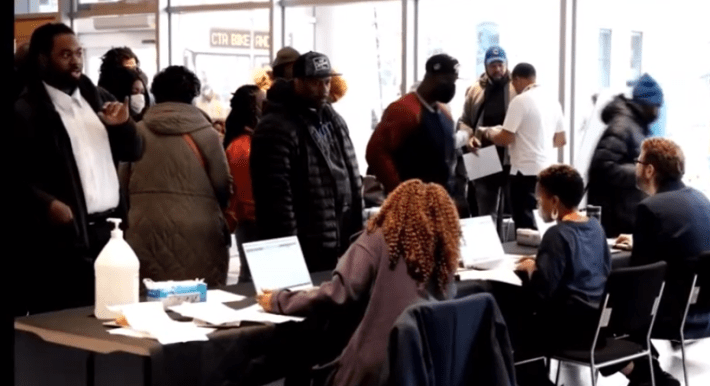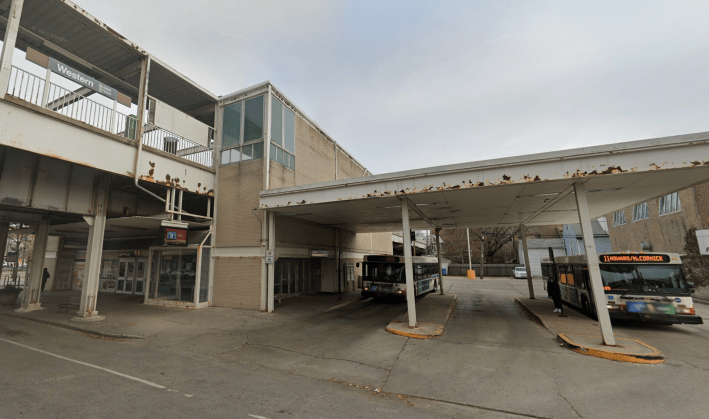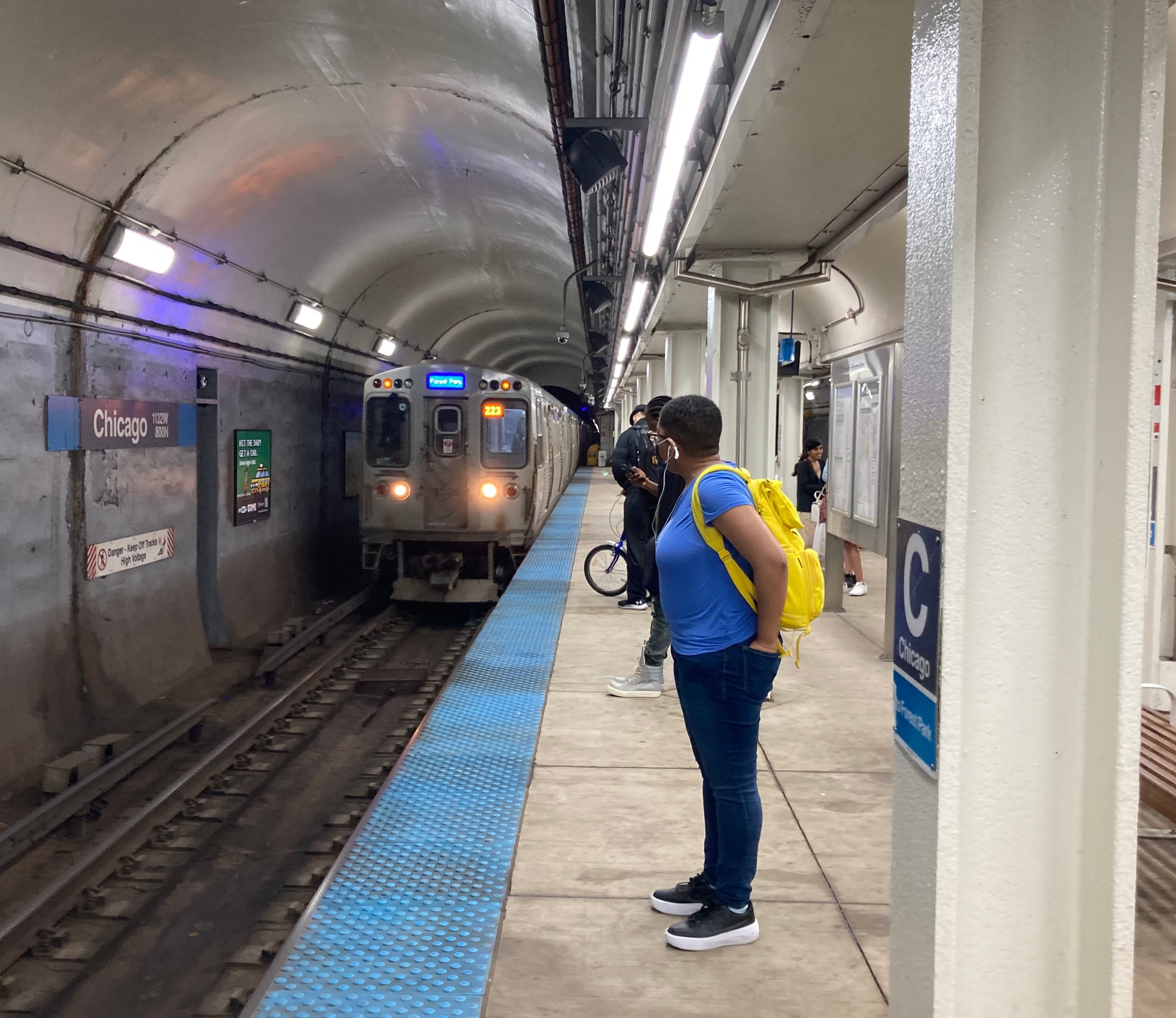The April 12 CTA board meeting, which was held over Zoom, featured a discussion of recent train and bus reliability data, which Streetsblog previously reported on. The board also approved contracts for initiatives to help POC and women job-seekers get hired on CTA construction projects or gain the skills needed to work on such projects; the preparatory work for the Western Brown ‘L’ line station rehab; and public art outside newly rebuilt north Red Line stations.
Board members and CTA president Dorval Carter Jr. also spent time complaining about public's perception of the transit system, which the leaders said is too focused on negatives like poor service, crime, and unclean facilities. The board members and Carter argued that the best way to make residents view the CTA in a more positive light is to send information directly to riders, accentuating the positive and emphasizing efforts to find solutions to these problems.
Expanding workforce recruitment
Carter has continuously said hiring more train operators, bus drivers and support staff is the only way to restore service to pre-pandemic levels. At last week's meeting meeting, he spotlighted an April 8 job fair for applicants who face barriers to employment such as past incarceration. “The event was a tremendous success, with 774 individuals registering online and 301 participants, all of whom submitted applications and were offered interviews. It will not be the last [such event.]” He thanked CTA employees who assisted the applicants during the recruitment fair.

Later during the meeting, the board approved spending a total of $3.4 million on contracts to recruit women and people of color for CTA construction projects. The first contract primarily concerns longterm workforce building. The transit agency will pay Chicago Women in Trades, Metropolitan Family Services, and Revolution Workshop to recruit “economically disadvantaged candidates,” screening them and placing them in a pre-apprenticeship program. That will allow them to get into an apprenticeship program, which will eventually qualify them for working on transit-related construction projects. The second contract will pay Chicago Women in Trades and HIRE360 to assist “qualified career-seekers with finding employment on CTA projects and other construction projects in the region.”
Western Brown Line station rehab bids
During the meeting, the CTA board approved a package of 15 construction project bids without discussion. But a press release the CTA sent out shortly afterwards revealed that the agency plans to renovate the Western Brown Line station, which last received major upgrades in 1979-1981, plus some minor improvements in 2004 as part of the Brown Line Capacity Expansion project. Last year, the Chicago City Council approved $8 million in tax increment financing dollars to help cover around $30 million in project costs. This includes replacing the elevators, improving station lighting and drainage, upgrading the security cameras, putting in a new public announcement system, and marking nearby curbs and sidewalks more accessible to people with mobility issues. The bus turnaround on the south side of the station will be refurbished as well.

According to the press release, the vote wasn’t about the construction project itself. Rather, the board awarded a $19 million contract to F.H. Paschen, S.N. Nielsen & Associates LLC, based in the O’Hare neighborhood, to do pre-construction services: land surveying, structural engineering and developing designs. The second phase contract, which will include final design and the actual construction, will be bid separately at an unspecified future date. The design work is slated to begin as early as this summer, with construction beginning in 2024.
Artwork at the rebuilt north Red Line stations
At the meeting, the board voted to spend a total $750,000 to commission public art for the Lawrence, Argyle, Berwyn and Bryn Mawr stations, which are being rebuilt as part of Phase I of the Red and Purple Modernization Project. According to a press release, the contract for the Lawrence station art went to Tom Torluemke of Dyer, Indiana. The contract for Argyle station art went to Chicago photographer Mayumi Lake. The contract for the Berwyn station went to Chicago artist and the School of Art Institute of Chicago adjunct professor David Lozano.
For the Bryn Mawr station, CTA awarded contracts to two artists. The art for the main Bryn Mawr Avenue entrance will be done by Chicago painter William Conger, while the contract for the new Hollywood Avenue entrance went to Chicago artist Alice Hargrave.
How to improve the CTA's reputation?
The board spent much of the meeting talking about the CTA’s image, and what can be done to improve it. Board chair Lester L. Barclay acknowledged that CTA faces “challenges,” but he was among several board members who argued that media coverage focuses too much on where the transit agency is falling short. “It is imperative that we take a more proactive approach in our messaging on how we're addressing our challenges. I know we have a lot of work to do, but we need to make sure that we're showing the public the hard work in progress and highlight our successes. If we don't get the message out there, the narrative will be set for us and therefore place us in reaction mode."
Barclay called on the CTA to "learn from past experiences and make sure that the riders get the message directly from us, and make sure we consider all the ways to achieve it." He suggested emphasizing station security cameras and spotlighting instances in which people who were allegedly recorded committed crimes on CTA property were arrested.
Board member Michelle Lee pointed to employee recognition awards the transit board gave out earlier during the meeting, and said this is something this CTA could use to change the narrative. "We can definitely lean in to the good stuff. There's a lot of good stuff that's happening here."
Carter agreed, saying that the staff is looking at ways of getting the message out in a “much [more] proactive way. I recognize that we have to do a better job of telling our story, and we have allowed others to dictate what our story is, and that is not necessarily been an accurate depiction of what's really happening on the CTA."
Of course the most effective way for the CTA to change public perceptions that the system is unreliable, unsafe, and unsanitary is to significantly improve reliability, safety, and sanitation.






